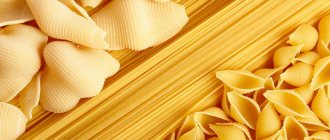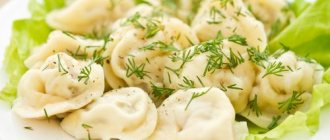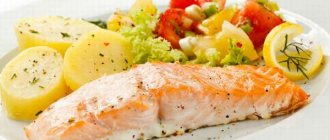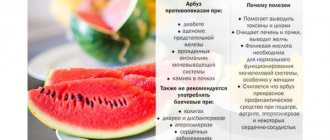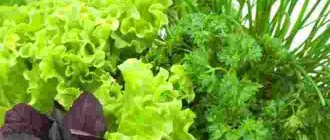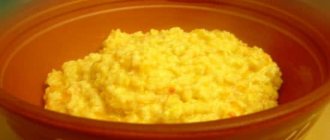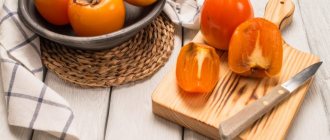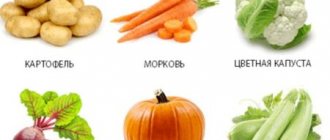Damage to the pancreas with pancreatitis is not the most pleasant disease. Before you recover, you must undergo a long course of treatment and follow a special diet, when all products are “tested” for suitability.
The dietary table implies that easily digestible dishes and products included in the daily diet will not overload the pancreas and at the same time fill the body with necessary vitamins and minerals.
Pasta is one of the universal products that can and even should be introduced into a patient’s diet in the form of soups, casseroles or side dishes.
Pancreatitis and pasta
Inflammation of the pancreas is a serious disease, the success of treatment of which depends on two components: drug therapy and adherence to dietary nutrition. Of great importance is the diet, in which the emphasis is placed only on those foods that do not overload the damaged organ and do not disable it even more. In this regard, before you eat anything, you must consult with a specialist to see if this or that food will aggravate the situation.
The same applies to pasta: people suffering from pancreatitis must clearly understand whether this product can or cannot be eaten, how to choose and prepare it correctly, and also what volume one serving can be.
Noodle and cottage cheese casserole
Products:
- 100 g boiled noodles;
- a couple of teaspoons of granulated sugar;
- egg;
- 75 g cottage cheese.
Preparation progress:
First, grind and thoroughly mix the cottage cheese with granulated sugar. In a separate bowl, beat the egg well, then mix it into the curd mass. Next, mix the cooled noodles with cottage cheese. Grease the mold and place the curd mixture on it. Cook the casserole for fifteen minutes, do not allow a crust to form.
An excellent option would be not store-bought noodles, but home-made noodles. It can be used immediately, or you can freeze it and use it gradually.
Is it possible to eat pasta with pancreatitis?
How to eat pasta for pancreatitis is a question asked by those who are faced with the question of dietary restrictions for this dangerous disease. Inflammation of the pancreas is always difficult, but therapeutic nutrition can actively reduce the severity of symptoms from this organ of mixed secretion. A number of prohibitions are imposed on some products that can cause excessive production of enzymes by the pancreas, which aggravates its condition. The type, variety and amount of pasta, be it spaghetti or vermicelli, in the diet of a patient with pancreatitis is determined by the stage of the pathological process.
Such a versatile dish as pasta can be combined with a wide variety of foods. Pasta is not prohibited for people with an inflamed pancreas, so they can be safely included in the diet without any fear that a new attack of the disease will occur. In general, this product has no contraindications for use; it is approved even for the most serious pathologies of the digestive system.
Despite the fact that pasta is not capable of causing harm to health, with pancreatitis not any product is suitable for consumption. Thus, different varieties of wheat are used to produce pasta: hard and soft. Pasta made from durum pasta contains a large amount of vegetable protein and fiber, unsaturated fats and slow sugars. Due to this, the product is characterized by easy digestibility, which is of great importance for pancreatitis.
It should be understood that inflammation of the pancreas is a disease that is accompanied by swelling of the organ and narrowing of its bile ducts, resulting in the accumulation of bile and its stagnation. Pancreatic enzymes, for the production of which the pancreas is responsible, do not enter the duodenum, but begin the process of digestion of the organ itself, thereby causing tissue destruction, pain, nausea and vomiting.
That is, the result is that pancreatic secretion breaks down not food, but the pancreas itself. Heavy foods containing coarse fiber or large amounts of fat only aggravate the situation. For such food, the organ needs to produce considerable volumes of enzymes, but since the pancreas is weakened, it cannot cope with its primary task.
This is the essence of the need for dietary nutrition: the diet should contain only those foods that do not overload the organ and do not contribute to the deterioration of its condition. Boiled pasta made from durum wheat is just such a dish.
Things are somewhat different with products made from soft varieties: they contain little vegetable protein, but quite a lot of gluten and gluten. These substances require a large amount of pancreatic enzymes for their breakdown, and therefore such food is very difficult and long to digest, which creates additional stress on the damaged pancreas.
In this regard, the answer to the question whether it is possible to eat pasta with pancreatitis cannot be unambiguous. It is allowed to introduce pasta into the diet, but not all types, but only those in the production of which only durum wheat was used.
Product for chronic disease
During the recovery period, pasta for pancreatitis of the pancreas can be called a universal dish that will help you quickly get back on your feet.
The only thing is that you need to adhere to the cooking rules that should be followed when preparing dishes for patients with the disease.
This disease requires a particularly meticulous approach to the preparation process. Only boiling in lightly salted water or baking is permissible; food should not be over-salted or fried.
Let's consider options suitable for the cooking process.
What are the benefits of noodles and vermicelli?
Not only is pasta an easily digestible product, it contains many useful substances that will come in handy for people whose bodies are significantly weakened after bouts of illness and forced fasting. Products made from durum varieties are a source of the following vitamins, minerals and components necessary for full health:
- Vitamin A, especially relevant for inflammation of the pancreas: it improves the growth of all cells and tissues, ensures renewal of mucous membranes and skin, in addition, this vitamin affects the condition of hair, nails and teeth, improves vision, and acts as an excellent preventive measure for the development of malignant tumors;
- Vitamin E, which is a natural antioxidant;
- B vitamins, which are needed by almost all organs and systems, are necessary for the normal functioning of the brain, normalization of the central nervous system and cardiovascular system, improvement of intestinal function, hair and skin condition, and increased immunity;
- Minerals: potassium, phosphorus, iron, magnesium, choir, sulfur, calcium, sodium, silicon, etc.;
- Amino acids, complex carbohydrates, as well as fiber, which helps remove toxins and toxic substances from the body. High-quality pasta is a real boon for people suffering from pancreatitis.
The product does not contain a single gram of fat, so you don’t have to worry that it will be too long and difficult to digest. 100 g of such food contains only 350 kcal; thanks to this feature, pasta often becomes the basis of the diet of those losing weight. An abundant amount of complex carbohydrates ensures easy digestion, while fat burning occurs in parallel. And finally, the product deserves attention because it is very filling: after eating pasta, the feeling of fullness persists for a long time.
Strict selection of products for patients with pancreatitis usually does not affect such a common side dish as pasta. They are a fairly conservative product for this disease with a characteristic pathogenesis and clinical picture. Pasta, in its huge variety, is not excluded from many dietary tables for diseases of the digestive tract due to the absence of contraindications for consumption.
However, the modern food industry produces so many types of pasta that it is sometimes difficult to find a product of the required quality and composition. In order for the product to be easily absorbed and not cause excess secretion from the pancreas, when going to the store you should consider the following recommendations: For pancreatitis, you can only eat pasta made from durum wheat.
Products of this origin are devoid of fatty components and contain a high percentage of vegetable protein. Coarse grinding slightly increases the price of the product. Mild processing of pasta makes its cost somewhat lower. Their use is unacceptable in the phase of exacerbation of chronic pancreatitis or in the first episode of the disease. In Italy, pasta is considered to be those products that are made from wholemeal flour. The post-Soviet space does not adhere to such a classification, and labels these products as the highest grade.
Norms and conditions for eating pasta for pancreatitis
In the presence of pancreatitis, the patient is prescribed fractional meals, which will not lead to overload of the pancreas.
During different phases of the disease, doctors recommend following the following dietary order:
- if it worsens, pasta is prohibited;
- during subsidence - about 200 grams of product per day;
- in the stage of long-term remission - up to 300 g daily.
If you experience pain in the abdominal cavity of a patient with pancreatitis, which becomes more frequent when eating pasta, you should temporarily give it up so as not to complicate the course of the disease.
It is known that durum wheat pasta should be eaten undercooked, but a patient with pancreatitis should not adhere to this rule, since the action of the product in this form often leads to a negative reaction of the pancreas, manifested by increased bile secretion and diarrhea.
When the disease worsens, pasta is excluded from the diet; its use can only be started after a stable remission has occurred, when pain, vomiting and other symptoms of the disease have disappeared. When introducing any new dish with one of the pasta products into the patient’s diet, it is important to observe what the body’s reaction to it will be. Especially if you are supposed to eat it during the period when the acute phase of the disease has just begun to soften. The patient should be offered to eat in small portions, literally a few spoons.
How to choose pasta when you are sick
The first rule that must be followed in the presence of a disease such as pancreatitis is to choose only those pasta products that are made from durum wheat. However, there are quite a lot of them on store windows and it is sometimes very difficult to figure out where a good product is and where it is of poor quality.
When making a purchase, you need to clearly know that all pasta must comply with state standards, so when choosing, you should pay attention to the following features:
- Packaging: it must be transparent with the date of packaging on the reverse side, as well as information about the composition of the product and the presence of nutrients in it;
- Color of products: ideally, these are not too bright shades, otherwise it can be assumed that the composition contains chemical rather than natural dyes;
- Surface: high-quality products have a smooth and shiny structure, they are uniform and do not contain any inclusions, dots or foreign marks;
- Integrity: the package should not contain broken or crumbled pasta; if the products are crushed and their color is grayish, most likely the drying technology was violated, so there is a possibility that during the cooking process such pasta will simply turn into porridge.
Products made from hard varieties, unlike low-quality products, do not stick together during cooking and do not lose their original shape, remaining slightly dense and pleasant to look at. To prevent pasta from losing its beneficial substances, it is not recommended to rinse it under cold water at the final stage of cooking.
Focusing on these criteria, you can easily purchase a good product that will not only become a safe dish, but will also have the most positive effect on your body.
Are there any contraindications?
With the exacerbation of diseases of the gastrointestinal tract, the list of allowed dishes is rapidly decreasing, and pasta, regardless of the flour it is made from, becomes harmful. Why is this happening? The fact is that products made from durum wheat are usually cooked to an “al-dente” state, in simple terms – undercooked. Eating such food is dangerous and leads to unpleasant consequences:
- Increased release of bile is stimulated, which has a detrimental effect on a person’s condition during acute pancreatitis,
- Intestinal motility improves, which can provoke or intensify existing diarrhea.
Thus, during the acute period of the disease, eating pasta is strictly prohibited, but during stable remission it can become the basis of any person’s diet. However, despite the apparent simplicity and simplicity of this dish, you need to prepare it correctly.
What types of pasta do you prefer?
Not any pasta is suitable for the table of a person suffering from pancreatitis. It’s not enough to prepare them correctly; you also need to know how to choose a quality product. To do this, you need to have certain knowledge that will help you not make a mistake with your purchase and purchase exactly what will result in a tasty and healthy dish.
Products from durum wheat
For diseases of the gastrointestinal tract, as well as the pancreas, you can only eat pasta that is made from durum wheat: they contain a large amount of fiber and do not contain fat at all. Such a product is easy to recognize among a wide range: just look for the capital letter A on the packaging, which just indicates that the pasta is made from the raw materials we need.
The composition is of decisive importance: it should contain nothing except premium wheat flour and water. Another product characteristic that you should pay close attention to is the amount of protein. A value of less than 12 g indicates that admixtures of a different type of flour were used in the production of products, so we can say with confidence: the higher this indicator, the better the pasta.
Colored pasta does not become a restriction on eating it in case of pancreatitis. Most often, different shades are obtained by adding natural dyes to pasta: carrot or beet juice, cuttlefish ink, spinach. But before purchasing such a product, carefully review the composition: the presence of code E in it is a clear sign that the color of the pasta was given by something other than plant components.
It doesn’t hurt to inspect the packaging visually: if it contains products of a golden or pleasant yellow color, and their surface is smooth and even, without chips or broken parts, then you can safely buy such a product, and also count on the fact that thanks to it By consuming it, your body will be saturated with vitamins (A, E, almost all group B) and useful minerals (potassium, magnesium, phosphorus, sulfur, silicon, etc.).
Dietary fiber, which is part of high-quality pasta, not only saturates, but is also easy to digest, and therefore both the gastrointestinal tract and the pancreas work as usual and are not at all overloaded.
The flour contains:
- starch and valuable dietary fiber, which are easily accepted by the digestive system and stimulate intestinal function;
- potassium, phosphorus;
- vitamins B, E;
- iron, magnesium, etc.
Products from soft wheat varieties
But this pasta is strictly prohibited in case of inflammation of the pancreas, and eating such food is unacceptable even with the onset of stable remission, when the symptoms of the disease no longer appear and do not bother the patient at all. They can be identified thanks to a visual assessment and the information indicated on the back of each pack.
The letter B denotes products for the production of which flour of the first and highest grades was used, while the letter B indicates a low-quality product made from soft wheat or baking flour. Typically, such products are very fragile, they crumble heavily and do not maintain the integrity of their structure, and therefore are in a crushed state in the package. Their color is white, light yellow or, conversely, unnaturally yellow. The surface of these products is rough, there are white spots on it, which indicate that the dough was poorly mixed during the production process.
There is an order of magnitude less protein in this product, but it contains gluten and gluten in fairly large quantities. Pasta made from soft wheat varieties is difficult to digest, they load the entire gastrointestinal tract and force the pancreas to work at an accelerated pace, because to break it down the organ needs to produce a considerable amount of pancreatic enzymes. In addition, with regular consumption of such pasta, there is a high risk of gaining excess weight quite quickly, which is probably the last thing every person wants.
homemade noodles
Product composition:
- 300 g flour (needed from durum wheat);
- three eggs;
- a pinch of salt.
Preparation progress:
In a bowl, beat the egg with a whisk. Pour flour into another bowl, make a dimple in it and pour the egg mixture into it. The dough must be kneaded for 30 minutes until it becomes elastic. After this, the dough must be placed in a bag for forty minutes. At the end of the time, divide the dough into small pieces, which we roll in flour. Next, roll out thin layers (literally a couple of millimeters thick) and leave them to dry for 10 minutes, after which we divide the dough into noodles with a knife. You can cook homemade noodles in just five minutes.
Pasta for pancreatitis and cholecystitis
Inflammation of the gallbladder, medically called cholecystitis, often occurs in conjunction with pancreatitis. These two diseases are closely interrelated and are united by the fact that drug therapy alone is not enough to treat them, so in parallel the patient is forced to follow a strict diet. Proper nutrition is designed to eliminate bile stagnation and relieve inflammation of the organ.
The basis of the diet should be those foods that do not overload the gastrointestinal tract and do not irritate the gallbladder mucosa. Fatty foods, spicy dishes, confectionery and alcohol are what can aggravate the situation during an exacerbation and provoke another attack during remission.
Pasta for cholecystitis is not a prohibited product, but their choice should be approached with maximum responsibility. Just as in the case of inflammation of the pancreas, it is not allowed to eat pasta made from soft varieties of wheat. They are difficult to digest and create a serious burden on the entire digestive system.
A high-quality product, on the contrary, can not only be easily digested, but also have a positive effect on a weakened body. A large amount of vegetable protein, complex carbohydrates, amino acids, vitamins and a whole range of minerals - all these are the substances that group A pasta contains.
Despite these features, nutritionists do not recommend consuming large amounts of pasta; moderation is encouraged in everything. The ideal way to serve this dish is to combine it with meat products, which are rich in building material for all tissues - protein, as well as vegetables. The portion should be small, since overeating has an adverse effect on the condition of the digestive organs. Another important point is the method of preparing pasta.
After boiling, they cannot be additionally fried in a frying pan: when heated, vegetable oil begins to release toxic substances, in addition, it makes the dish greasy, and in this form the food irritates the mucous membranes and forces the inflamed organs to work at full capacity, which may well ultimately become cause of exacerbation.
Pasta dishes during exacerbation of the disease
People who have once experienced an attack of pancreatitis already know that in the first days of crisis, eating anything, including pasta, is strictly prohibited. The same applies to exacerbation of the disease. You must fast for 2-3 days; you can only take a decoction of chamomile or rose hips or regular drinking water. Such measures are needed to ensure complete rest of the pancreas, which is out of order and therefore cannot function normally.
Any food, even dietary, makes the organ work, since it requires the production of enzymes necessary for the breakdown process. This greatly aggravates the situation and does not allow the pancreas to “come to its senses.”
As you fast, during the first few days, the organ regains its strength and gradually begins to function. But the diet at this stage has not yet lost its relevance: you cannot start eating suddenly, eating everything you want and, moreover, in excessive quantities. Otherwise, the symptoms that usually accompany acute pancreatitis may occur:
- Pain in the abdominal area;
- Flatulence and diarrhea;
- Nausea and vomiting;
- General malaise: weakness, drowsiness, loss of appetite.
For this reason, both nutritionists and gastroenterologists advise abstaining from food in the first days, and then, as symptoms weaken, introducing pasta or any other foods into the diet with extreme caution. You need to start with a minimum serving size (50 g), monitoring your body’s reaction each time. If absorption occurs well, gradually the amount of food can be increased to 100 g. By following these rules, as well as adhering to the correct method of preparing a pasta dish (and at this stage this is exclusively boiling), you will protect yourself from a relapse of the disease and maintain your good health.
Product for chronic disease
After complete relief of the pain syndrome and after 3-4 weeks, the diet can be somewhat expanded by introducing complete dishes made from pasta. This means that the products can not only be boiled, but also baked. A good example of this is a casserole, which can be prepared using different fillings. Pasta still cannot be fried, nor should you add excessive amounts of salt to it, much less spices, garlic, pepper, or fried meat.
Despite its usefulness, pasta with this method of preparation can cause harm and cause another attack of pancreatitis.
The maximum permissible daily intake of this product should not exceed 300 g.
How to properly prepare pasta for a diet menu?
It is worth noting that it is forbidden to over-salt, fry, or undercook pasta, as this can lead to a sharp exacerbation of chronic pathology, even if it is in stable remission. It is also prohibited to use rich dressings, hot sauces and adjika.
Cooking noodles or other pasta-type products is allowed by boiling or baking.
After the pancreatic attack begins to reduce the intensity of its manifestation, boiled pasta can be gradually introduced into the patient’s diet. To do this, it is better to opt for spaghetti, which is pre-chopped and boiled in lightly salted water. To reduce the calorie content of this product, it is recommended to cook it for at least 30 minutes, during which all the starch will be released from the spaghetti, turning into a paste when interacting with water. After this, the pasta should be placed in a colander and all the liquid should be drained, rinsed and seasoned with a small piece of oil.
After the patient's condition has stabilized, various pasta casseroles can be gradually added to his diet, but they can be consumed in minimal quantities.
If the patient is a child, then you need to be as careful as possible when preparing pasta. This is due to the fact that pasta contains gluten, to which children have an allergic reaction. In such cases, doctors recommend using gluten-free pasta, either buckwheat or rice flour pasta to prepare milk soup.
With the development of pancreatic pathology, patients do not have the opportunity to eat all those tasty and savory dishes that were consumed on a regular basis before the onset of this disease. But, due to the fact that the list of permitted products includes pasta, which can be prepared in several ways, you can create real gourmet dishes from ordinary everyday food. They will decorate not only every day, but will also be a wonderful addition to the holiday table.
Pancreatitis is a gastrointestinal disease that affects the pancreas. The disease requires adherence to a certain diet, otherwise constant overload of the gland can lead to exacerbation or complications. Pasta is recognized as one of the approved foods for pancreatitis due to its optimal absorption by the stomach. They are among the products whose presence on the dietary table of patients diagnosed with pancreatitis is not only possible, but also desirable. But there are small restrictions for pasta, since this product cannot always be eaten without causing harm to yourself.
How to choose pasta when you are sick
With the development of pancreatic lesions of a parenchymal organ, the diet should include only high-quality products. The same applies to pasta, which should be purchased only from durum wheat, as they:
- have a high nutritional level;
- provide complete saturation of the body with a minimum portion of consumption;
- do not provoke the deposition of extra pounds.
But, to ensure proper nutrition, it is necessary to purchase high-quality products in the store, which currently poses many problems, since pasta, spaghetti, noodles and vermicelli are produced by different manufacturers, both domestic and imported. But how to choose what a person with a pancreatic diagnosis needs?
Italian-made pasta is almost always made only from durum wheat. In all other cases, the product is referred to as pasta.
From domestic manufacturers you can purchase goods labeled “Top grade. Group A.”, all other types of pasta should not be purchased, since they do not meet the standards and cannot be consumed if pancreatitis, gastritis, cholecystitis and gallstone pathology in the gallbladder cavity develop.
Another distinguishing factor of quality products is high cost.
It is also worth noting that if products from imported manufacturers are equal in price to domestic ones, then you need to carefully study the composition and caloric content of this product before purchasing it. In such cases, most often the packaging contains pasta made from soft wheat, which you need to stay away from.
What types of pasta should you buy?
Pasta for pancreatitis should be chosen very carefully.
If in a healthy person taking a low-quality flour product can only cause discomfort and bloating in the abdomen, then in a patient with pancreatitis it can cause severe aggravation and deterioration of the condition.
The modern grocery market offers a wide selection of pasta of various wheat varieties and producing countries.
When choosing a product, you should carefully study the composition, which indicates the type of product.
We suggest you read: Photometric or electrochemical glucometer, which is better?
There are:
- Pasta made from soft wheat varieties, which have a whole list of negative qualities. These include a high content of simple carbohydrates, calories, and impurities. This variety is absolutely contraindicated for sick people.
- Durum pasta is a suitable option for patients. They contain a lot of polysaccharides, fiber, trace elements and minerals.
- Homemade pasta
It is very healthy to eat coarse pasta.
Typically, the cost of such a product is much higher, and it is much harder to find.
Methods for preparing pasta during illness
There are several rules for properly preparing pasta:
- It is better not to overcook pasta when cooking.
- Long noodles need to be broken into smaller pieces.
- When the products are cooked, they are poured into a colander, where they are washed. After this, add vegetable oil and mix thoroughly.
- Fried foods are prohibited.
- It is possible to prepare pasta casseroles, but you need to observe the body’s reaction.
Use in acute and chronic stages
When including pasta in the diet menu for pancreatitis of the pancreas, you need to know whether it can be eaten in any form of the disease. The disease occurs in acute and chronic stages.
During the period of exacerbation, unpleasant signs and symptoms intensify. The patient experiences severe pain and digestive disorders. The chronic form involves the attenuation of the disease.
In the acute stage of pancreatitis, it is forbidden to eat any pasta. The highest grade of products will be beneficial only if they are slightly undercooked. Such food is unacceptable during an exacerbation, since it can increase the outflow of bile, which, if it enters the inflamed organ, will increase inflammation. Acceleration of intestinal contractions caused by coarse foods will cause pain and increase diarrhea.
Eating pasta made from wholemeal flour is only allowed in cases of chronic pancreatitis. During this period, the painful processes fade, and unpleasant symptoms disappear. In order for such dishes to bring only benefits and not harm, you need to prepare them correctly.
Cooking methods
What is the best pasta to eat? Is it possible or not to have spaghetti and noodles for pancreatitis? You can, but follow the cooking rules:
- It is better to eat slightly undercooked pasta.
- If the vermicelli is long, it is broken into several pieces before being sent into boiling water.
- At the end of cooking, place in a colander, then rinse thoroughly and pour in melted butter and mix.
- Frying products is strictly prohibited.
- If the reaction is positive, pasta-based casseroles are allowed to be introduced.
eating pasta
To make the dishes healthy and tasty, several cooking options are offered:
- Vermicelli is broken into small pieces, placed in boiling salted water, and cooked for 30 minutes. It will increase in size, the starch will turn into paste, and the calorie content of the dish will decrease. The finished product is placed in a colander, washed, and vegetable oil is added.
- The casserole is being prepared. The vermicelli is boiled and cooled to room temperature. At this time, beat 1 egg, mixing it with 80 g of low-fat cottage cheese. Grease a baking dish with butter and place the prepared ingredients into it. Bake in the oven for 15 minutes, until the crust appears too brown.
- Homemade options are popular. Prepared exclusively from wholemeal flour, using 300 g of product as a basis. Add 3 eggs and knead the dough until elastic. Wrap it in cling film and leave for 1 hour. The finished dough is rolled out into layers up to 2 mm thick, dried, and cut into strips. Cook for no more than 7 minutes.
Norm of pasta
The use of products made from wholemeal flour, such as pasta, for pancreatitis is allowed and useful, but in certain quantities, taking into account the stage of the disease. If the disease is in a period of exacerbation, exclude any varieties, otherwise the inflammatory process will intensify.
The chronic form of pancreatitis allows the consumption of such dishes, but in moderation. When fading, the daily norm does not exceed 250 g. Monitor the body’s reaction so that there is no strain on the digestive system.
Recipes for patients after an exacerbation
The diet, which is established for the patient immediately after the disappearance of pain and other phenomena accompanying the disease, is quite strict. Only easily digestible foods are allowed, and all food must be grated or crushed - this is necessary in order to facilitate the digestion process and eliminate the risk of mechanical injury to the gastrointestinal mucosa.
In fact, there are few options for dishes that can be made at this stage using pasta. Traditionally, for people who have recently experienced an attack of pancreatitis, pasta is simply boiled. However, you also need to be able to do this correctly - that is, as dictated by the diet prescribed for this disease. Let's look at the cooking scheme in more detail.
Spaghetti
To obtain boiled pasta, which a patient can safely eat in the first week after an attack, we will need:
- Spaghetti;
- A small amount of salt;
- 5 g butter.
Before placing pasta in a pot of water, there are two important rules to remember. Firstly, food in the first days after an exacerbation should be crushed. It is for this reason that it is recommended to break spaghetti into small pieces, the size of which will not exceed 2 cm. Secondly, you should assume that your portion will be small, so you need to take enough pasta, the amount of which will be approximately 50 g.
Having poured them into an enamel container, pour in water, its optimal amount is 2/3 - a large volume of liquid is required because the pasta absorbs too much water. Next, put the pan on the fire and wait until it boils. As soon as the process begins, the pasta should be slightly salted, but it is too early to turn off the heat. Typically, each package indicates the cooking instructions for spaghetti, so if you examine the back, you will probably find information regarding the boiling time there.
Based on it, you will receive a correctly executed dish. Don’t forget to stir the spaghetti; you need to do this frequently, otherwise you risk getting a sticky product with a far from aesthetically pleasing appearance. And finally, the last step is to place the finished pasta in a colander to drain the water and add a piece of butter to it, which, after mixing, will not allow them to stick together.
Recipe for making pasta in a phase of sustained remission
During the remission stage, when the disease does not make itself felt, you can start baking using pasta. At first glance, such a dish does not seem entirely natural, but in fact it has an unforgettable taste and a rather delicate texture, so it is unlikely that anyone will not appreciate it.
Let's look at several recipes for preparing the dish both in its pure form and with different fillings.
Boiled vermicelli casserole
This dish doesn't take too long to complete. The number of ingredients needed for this casserole is also small. We will need:
- 100 g pasta,
- egg,
- 10 g sugar and a little salt.
First of all, boil the pasta until half cooked. After draining the excess water, mix them with the egg, salt and sugar. The mold should be pre-coated with butter, after which the resulting mass is poured into it. After 15-20 minutes, the dish can be safely considered ready.
Cottage cheese casserole
Cottage cheese casserole is made in approximately the same way. Required components:
- 100 g noodles;
- 70-80 g cottage cheese;
- One egg;
- 10-15 g sugar;
- Salt;
- Butter - for greasing the bottom of the pan.
After boiling the pasta, mix it with grated cottage cheese and beaten raw egg, add a pinch of salt and a few teaspoons of sugar to the resulting mass. Next, you need to grease a baking sheet with oil and place the casserole base in it. Cook this dish in the oven for 15 minutes.
Pasta casserole with apple and sour cream
The vermicelli is pre-boiled and washed under running water. The non-sour apple is peeled and cut into small cubes (or grated). Pasta is mixed with an apple, the white of 1 egg, and a little sugar is added.
Then the dish is baked in the oven for 10-15 minutes at 180 degrees. The casserole is cut into portions, 1 teaspoon of low-fat sour cream is added. Serve warm.
You can also use other permitted fruits or berries; their fiber, after heat treatment in the oven, becomes harmless to the pancreas.
Properly prepared casserole will not harm the pancreas
Pasta with cheese or boiled egg
Sprinkle boiled pasta with grated cheese, soft, unsalted and mild varieties, eat immediately. Instead of cheese, you can take the white of a boiled egg (the yolk contains fat, it is not recommended to eat it), chop it, sprinkle it on the dish and eat it immediately.
Meat casserole
A casserole made with both pasta and meat is more satisfying. This dish can rightfully be called universal, since it can replace both a side dish and meat for it. To prepare it you need to take:
- 100 g pasta;
- 70-80 g of dietary meat (the ideal option is poultry, for example, chicken);
- One egg;
- 10 g sugar;
- A pinch of salt.
- 5-7 g butter.
First of all, you need to boil the noodles and meat. Having placed the finished pasta in a colander to drain the water, we do not waste time and proceed to the chicken: it must be passed through a meat grinder twice or chopped using a blender. Next, grease the mold with butter and begin to pour the resulting mass into it. By the way, the base for the casserole can be made in several ways: either mix the pasta with meat until smooth, or lay it along the sides and in the top layer, and place the meat filling in the middle. Fill the mixture with beaten raw egg, place the baking sheet in the oven and bake for 15 minutes.
Spaghetti with bechamel sauce
During the period of remission, you can diversify the menu by adding the famous sauce to boiled pasta or noodles. Only for pancreatitis is bechamel prepared without nutmeg, which stimulates the secretion of bile. A classic recipe based on milk, flour, butter, sugar and salt is suitable.
What dishes can be prepared from pasta?
Patients who decide to eat noodles must take into account several rules for preparing them while on a diet. They are as follows: do not fry pasta and cook it only boiled or baked. There are several pasta menu options:
When the exacerbation of the pathology completely subsides, you can risk preparing a boiled product. To do this, it is recommended to buy either small noodles or break spaghetti into pieces and boil them for half an hour - it is during this period of time that the extra calories come out of the pasta. Then the dish is transferred to a colander and wait until all the water has drained from them. At the end add a small amount of butter.
A little later, the person is allowed to try a casserole that includes pasta. But you shouldn’t overuse this dish. In order to prepare cottage cheese casserole, you need to prepare 100 grams of boiled and cooled vermicelli, add to it 100 grams of low-fat cottage cheese and an egg, beaten with a mixer. All of these ingredients should be transferred to a baking sheet greased with butter and baked for about 20 minutes. Here you will have to constantly ensure that a crust does not form on the casserole.
Diet-type meat casserole is prepared in the same way. Only instead of cottage cheese you need to add 100 grams of boiled meat to it. The meat is passed through a meat grinder, the pasta is placed in a thin layer on a baking sheet, the meat is placed on top, and then another layer of pasta is placed. A little later, the dish is filled with egg and sent to the oven for 20 minutes.
- Navy pasta. You need to boil the required amount of pasta without using spices and fats, add 250 grams of meat minced to the pasta and mix thoroughly. Instead of meat, the use of chicken liver is allowed if the patient does not have an individual body reaction to this food product.
- Pasta with fish. You should boil large shells and place them on a beautiful plate. Separately boil the chicken fillet and carrots. Add fish, carrots and herbs to pasta and serve.
- Vermicelli with cheese. Boil the noodles, add salt and a little oil. After this, grate with hard cheese.
- Stuffed "Nests". In order to prepare an exquisite and aesthetic dish, experts recommend purchasing nest-shaped pasta, boiling it and filling it with filling. Chicken meat placed in nests and sprinkled with grated fresh cucumber is ideal for the filling.
Homemade noodle option
For lovers of culinary experiments, there is another recipe that allows you to make pasta yourself at home. In fact, this process is very simple: it does not require much effort, a lot of time, or complex ingredients. All we need is 300 g of durum wheat flour and 3 eggs. You can even determine the quality of flour visually: soft varieties are characterized by a pure snow-white color, but the flour that suits us has a darker shade.
After mixing the flour and raw eggs, place the mixture in a plastic bag and put it in the refrigerator for about 30 minutes. After this time, the dough must be removed and then rolled out into a thin layer, from which narrow strips (about 2 mm) will be cut. Before you start boiling, it is recommended to dry each side of the pasta - 15-30 minutes is enough. This product should be cooked like regular pasta - no more than 7 minutes. If you get a lot of homemade noodles, the rest after drying can be placed in the freezer - this will not reduce the quality of the product.
How to properly cook pasta for a patient with pancreatitis
During remission, pasta dishes become an important component of the diet. The main task is to cook them correctly.
According to the rules of the diet, eating pasta for pancreatitis is allowed only boiled or baked, and never fried in oil, with hot sauces or overly salted.
You need to start eating pasta in small doses, and only in the absence of symptoms of the disease (pain, vomiting, intestinal disorders) can the patient increase the portion to normal.
The options for their preparation for different periods of the disease are as follows:
- After the peak of exacerbation of pancreatitis has passed, you can begin to eat boiled pasta little by little. It is good to use spaghetti by breaking it into small pieces (about 2 cm long). To reduce the calorie content of the product by turning starch into paste, you need to cook spaghetti for about half an hour. Then rinse them and add a little oil.
- As the condition improves, pasta casseroles are allowed, but you need to start with small portions, monitoring the patient’s reaction to this food. For example, make a casserole of pasta (100 g) with cottage cheese (75 g) and one egg. Place the mixture on a baking sheet, grease it with oil, and bake for 15 minutes, until a crispy crust appears. Pasta with meat is baked in the same way. It is good for the patient to prepare homemade noodles from durum wheat flour (300 g) and eggs (3 pieces). Knead, let sit for half an hour, then roll out thinly (about 2 mm), dry, cut into strips.
Although patients with pancreatitis are deprived of many tasty, but not very healthy foods, pasta can diversify the dietary menu due to the presence of several options for its preparation. Following simple rules when preparing and eating pasta will help the patient maintain the remission stage of pancreatitis for a long time.
Watch the video below for a recipe for making pasta casserole:
Inflammation of the pancreas is accompanied by unpleasant symptoms. Signs of pancreatitis include pain and irritation of the mucous membrane of the affected organ. For such a disease, a special diet is prescribed that excludes spicy, bitter, sour, fatty, and salty foods. One of the most common food items among people is pasta. They attract with their taste and speed of preparation. Is it safe to eat pasta with pancreatitis, what are the features and useful recipes.
A therapeutic diet involves light, low-fat, quickly digestible meals. All products undergo gentle cooking - boiling, stewing, steaming, baking. To answer the question whether it is possible to eat pasta with pancreatitis, it is important to understand what these products are.
